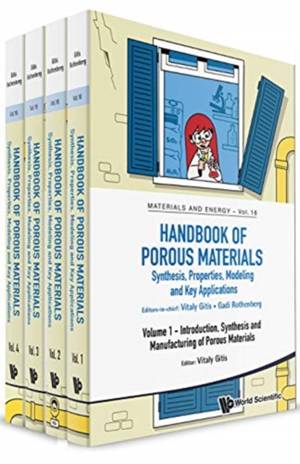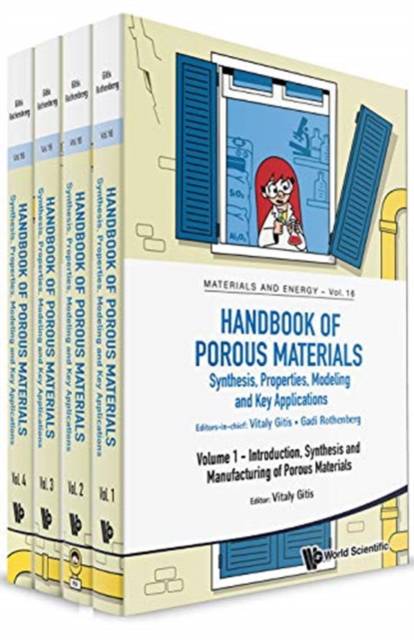
- Afhalen na 1 uur in een winkel met voorraad
- Gratis thuislevering in België vanaf € 30
- Ruim aanbod met 7 miljoen producten
- Afhalen na 1 uur in een winkel met voorraad
- Gratis thuislevering in België vanaf € 30
- Ruim aanbod met 7 miljoen producten
Zoeken
Handbook of Porous Materials: Synthesis, Properties, Modeling and Key Applications (in 4 Volumes)
€ 2.506,45
+ 5012 punten
Omschrijving
This four-volume handbook gives a state-of-the-art overview of porous materials, from synthesis and characterization and simulation all the way to manufacturing and industrial applications. The editors, coming from academia and industry, are known for their didactic skills as well as their technical expertise. Coordinating the efforts of 37 expert authors in 14 chapters, they construct the story of porous carbons, ceramics, zeolites and polymers from varied viewpoints: surface and colloidal science, materials science, chemical engineering, and energy engineering. Volumes 1 and 2 cover the fundamentals of preparation, characterisation, and simulation of porous materials. Working from the fundamentals all the way to the practicalities of industrial production processes, the subjects include hierarchical materials, in situ and operando characterisation using NMR, X-Ray scattering and tomography, state-of-the-art molecular simulations of adsorption and diffusion in crystalline nanoporous materials, as well as the emerging areas of bio-artificing and drug delivery. Volume 3 focuses on porous materials in industrial separation applications, including adsorption separation, membrane separation, and osmotic distillation. Finally, and highly relevant to tomorrow's energy challenges, Volume 4 explains the energy engineering aspects of applying porous materials in supercapacitors, fuel cells, batteries, electrolysers and sub-surface energy applications.The text contains many high-quality colourful illustrations and examples, as well as thousands of up-to-date references to peer-reviewed articles, reports and websites for further reading. This comprehensive and well-written handbook is a must-have reference for universities, research groups and companies working with porous materials.Related Link(s)
Specificaties
Betrokkenen
- Uitgeverij:
Inhoud
- Aantal bladzijden:
- 1492
- Taal:
- Engels
- Reeks:
- Reeksnummer:
- nr. 16
Eigenschappen
- Productcode (EAN):
- 9789811223228
- Verschijningsdatum:
- 6/01/2021
- Uitvoering:
- Hardcover
- Formaat:
- Genaaid
- Afmetingen:
- 160 mm x 239 mm
- Gewicht:
- 2739 g

Alleen bij Standaard Boekhandel
+ 5012 punten op je klantenkaart van Standaard Boekhandel
Beoordelingen
We publiceren alleen reviews die voldoen aan de voorwaarden voor reviews. Bekijk onze voorwaarden voor reviews.







